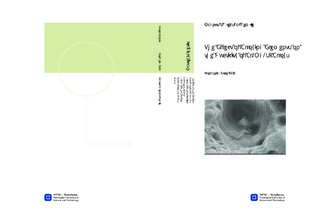The Effect of Alloying Elements on the Ductility of Al-Mg-Si Alloys
Master thesis
Permanent lenke
http://hdl.handle.net/11250/249653Utgivelsesdato
2014Metadata
Vis full innførselSamlinger
Sammendrag
Experiments were conducted to attempt to understand the effect of different alloying elements on the ductility of Al-Mg-Si alloys. Four alloys with different concentrations of Si, Mg, Fe, Mn and Cu were selected for examination. The strength-ductility relationship was evaluated by tensile tests, and microscopic analysis in light optical microscope, SEM and TEM was conducted to investigate grain-, constituent-, precipitatation- and fracture characteristics.Excess-Si (Mg/Si>1.73) was found to have a detrimental effect on the ductility of Al-Mg-Si alloys, without the presence of additional alloying elements. This alloy had an elongation to fracture of 23.1%, where failure occurred partly intergranularly, and was seemingly due to poor grain boundary characteristics. Adding Fe and Cu improved the ductility (and strength) to 42.9% elongation, and the change was related to the formation of secondary-phase particles, resulting in less free Si for embrittlement of grain boundaries. The best ductility, 79.2% elongation, was found by introducing Mn, which in addition to the above-mentioned changed the recrystallization behavior.The most desirable combination of tensile strength (456 MPa) and ductility (64.6%) was found in a balanced alloy (Mg/Si~1.73) with an addition of both Mn and Cu. Primarily, Cu was associated with an increase in strength, by changing the precipitation behavior and precipitate characteristics. Mn contributed to both an increase in strength and ductility, by forming dispersoids which influenced the recrystallization behavior, resulting in a fine subgrain structure.
